Louis XVI’s library at Versailles is the only room in the Private Apartments (Petits appartements) that the unfortunate monarch substantially altered after he came to the throne. Otherwise, he left his grandfather Louis XV’s rooms more or less as he found them.
Consequently, this library is also the only room in the Private Apartments that is decorated in the neo-classical style to which Louis XVI has given his name. Note the rectilinear paneling in the picture below.

Looking into Louis XVI’s library from the west door.
Louis XV had of course also had a library. In fact, he had several. A series of small libraries in the attic-level Petits cabinets was constructed for him in the 1730s, including a map room. He lost interest in the Petits cabinets after the creation of the Private Apartments and eventually made them over to his daughter-in-law, the Dauphine, in 1766. After her death, they passed to Mme du Barry, for whom an exquisite little library was arranged. It can be visited today.
Louis XVI liked to read. Ian Dunlop, in his classic history of the Chateau, simply entitled Versailles, says of him that “he was interested in history and geography and was a great reader. It is not inappropriate, then, that his first alteration to Versailles was to build himself a large and elegant library on the site of one of Madame Adelaïde’s former rooms.” Mme Adelaïde, as attentive early readers of this blog will remember, moved down to the ground floor of the Chateau in her nephew’s reign.
Louis XVI’s new library was designed by the architect Gabriel, who was also working on the new wing of the Chateau then being thrust out into the Cour royale, and it was executed by Antoine Rousseau.
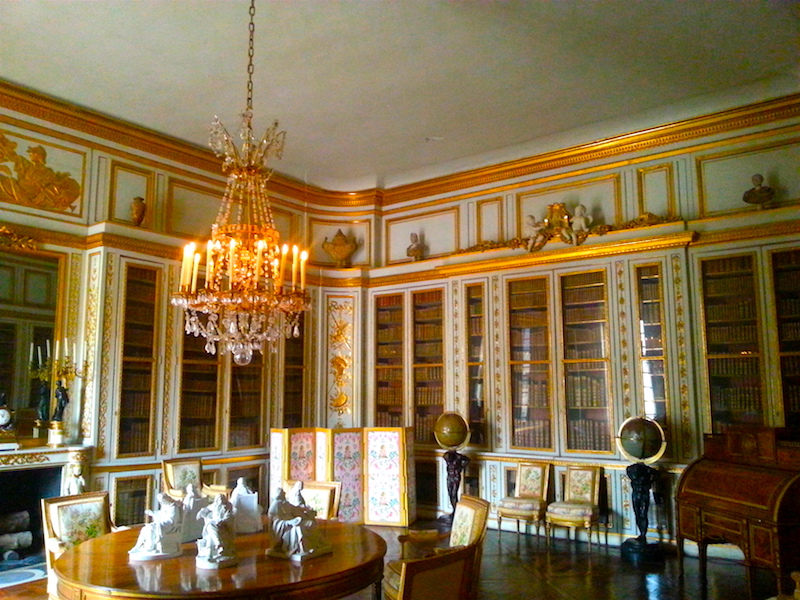
Looking into Louis XVI’s library from the east door.
I think Dunlop’s description is worth quoting in full:
“Rousseau’s ornament is restrained and exceedingly subtle. The rounded corners of the room are relieved with drops representing the great diversity of subject-matter in the Library shelves — globe, telescope, Roman sword, shepherd’s hat, books, which vary from the Henriade to the works of Bossuet, and the masks of Comedy and Tragedy, all joined together by a network of flowers and ribbons. Other floral drops, of the most delicate design and the most exquisite workmanship, mark the divisions between the bookshelves, while the centre of each case is surmounted by a gilt bas-relief, on the one side Apollo leaning on his lyre, and on the other France receiving homage from the arts. The greatness of France in the world of art and letters was a fitting subject for the symbolism of Versailles, and Louis peopled his Library with Sèvres statuettes of the great authors of his country — La Fontaine, La Bruyère, Racine, Boileau. Here, surrounded by the images of a glorious past, Louis loved to sit, at a little desk drawn up into the window recess so that he could look out on the people who came and went about their business in the courtyards his Palace. Behind him, the vast mahogany table, made of a single piece of wood, was littered with books endpapers. It was his favourite room, and it is still one of the few rooms in the Palace which have that ‘lived-in’ look which distinguishes a house from a museum.” (Versailles, p 169.)

Another view of Louis XVI’s library from the east door with the above-mentioned Sèvres statuettes slightly more foregrounded.
What Dunlop says is true. It DOES feel more like a lived-in room than most others at the Chateau, although the King’s desk is not placed by the window, but rather in a far corner, presumably to keep it safe. You’re not allowed close enough to the books to read their titles. I’ve read that Louis XVI was a fluent reader of English and owned more than 200 books in that language. It would be fascinating to know if they’re still there.
Not all the books are real, however. Some of the glass-fronted sections contain false book fronts to conceal doorways, as you can see in the photo below.
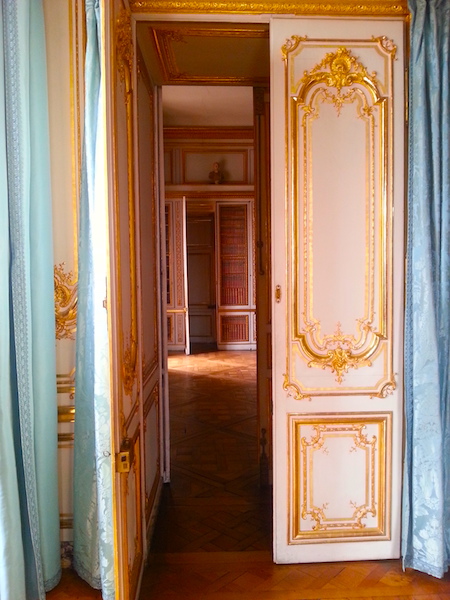
Looking from the dining room westwards into the library. Note the false book-fronted door at the far end of the room.
It’s my intention to post an in-depth description of each of the rooms in the Private Apartments. Next up (when I get to it): the King’s dining room.
Please comment below if you have any questions or remarks. Please also visit and ‘like’ the Versailles Century Facebook page, not to mention the Versailles Century gallery on Instagram (@versailles_century).







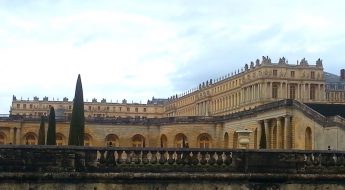
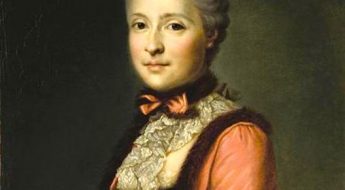
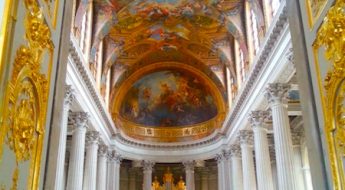








Leave a Comment